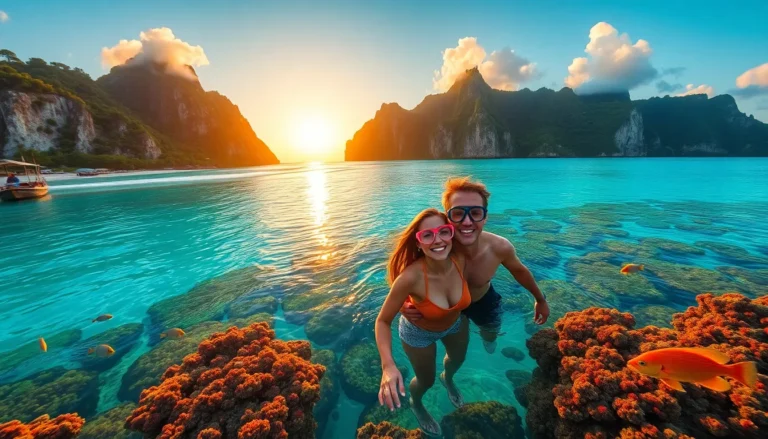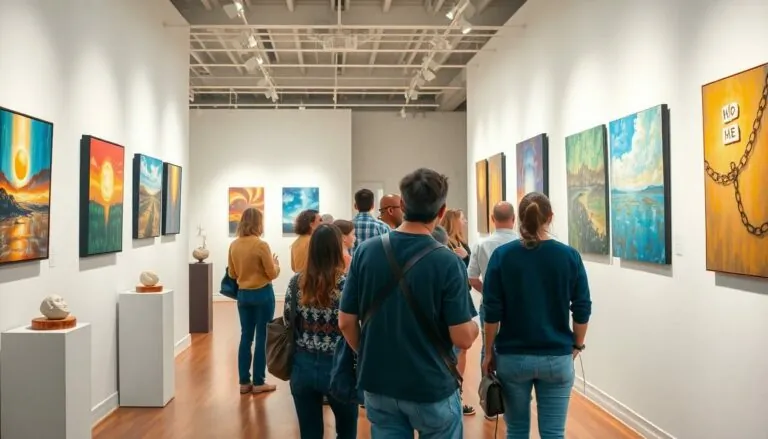Table of Contents
ToggleLong shot photography captures the world from a distance, showcasing vast landscapes or bustling cityscapes with a single frame. It’s like giving viewers a VIP pass to the bigger picture, where they can soak in the details without getting lost in the weeds. Whether it’s a majestic mountain range or a crowded festival, long shots create a sense of scale that draws the eye and stirs the imagination.
But let’s be honest—mastering long shot photography isn’t just about pointing and shooting. It’s an art form that requires a keen eye, thoughtful composition, and maybe a sprinkle of luck. So if you’re ready to elevate your photography game and make your friends think you’ve got a secret magic wand, buckle up. This guide is about to turn you into the long shot wizard you’ve always dreamed of being.
Overview of Long Shot Photography
Long shot photography captures expansive scenes, revealing landscapes and cityscapes in a single frame. This technique establishes context, offering viewers a broad perspective of the subject. Skillful composition plays a vital role in achieving impactful long shots. Developing an eye for detail ensures that photographers can effectively balance foreground elements with vast backgrounds.
Notably, long shots often convey emotions and narratives through their framing. Photographers can highlight the relationship between subjects and their environment. Capturing dramatic skies, sweeping hills, or bustling urban scenes demonstrates versatility in this photography style. Utilizing natural light enhances the image quality, allowing for vivid colors and textures.
The planning stage significantly influences the outcome of a long shot. It is essential to consider factors such as time of day, weather conditions, and composition before shooting. Incorporating leading lines or natural frames directs the viewer’s eyes toward the main subject. Active engagement with the environment inspires creativity, fostering unique photo opportunities.
When shooting long shots, utilizing a tripod stabilizes the camera, resulting in sharper images. Various lenses, including wide-angle and telephoto, can produce distinctive effects, enriching the visual storytelling aspect. Experimenting with different angles and heights further diversifies the shots captured.
Mastering long shot photography involves practice and patience. Reflection on each photograph helps identify strengths and areas for improvement. By consistently applying these techniques, photographers will enhance their skills, ultimately impressing their audience with stunning imagery.
Techniques for Long Shot Photography

Mastering long shot photography entails understanding various techniques that optimize results. Camera settings and composition play crucial roles in creating stunning images.
Camera Settings
Adjusting camera settings is critical for long shot photography. Use a lower ISO, typically around 100 to 200, to minimize noise in images. Set the aperture to a higher f-stop, between f/8 and f/16, which ensures a deeper depth of field. Select a shutter speed that corresponds to the available light, often 1/125 seconds or slower for landscapes. Enable RAW format for greater flexibility in post-processing. Utilize manual mode for complete control, allowing adjustments to all settings based on lighting conditions.
Composition Tips
Composition defines the visual narrative in long shot photography. Incorporate leading lines to draw viewers into the scene. Balance elements in the foreground and background to create depth. Use the rule of thirds, placing key subjects along the intersecting lines for dynamic images. Capture interesting skies or natural borders to enhance the composition. Experiment with different perspectives, including high and low angles, to find unique vantage points. Evaluate scenes critically and refocus as necessary to maintain sharpness throughout the frame.
Equipment Needed for Long Shot Photography
Long shot photography requires specific equipment to achieve the desired results. Quality tools enhance the photographer’s ability to capture expansive views and maintain detail over distance.
Lenses
Wide-angle lenses, ranging from 16mm to 35mm, open up scenes by emphasizing depth and perspective. Zoom lenses also serve a vital purpose, providing flexibility to adjust framing without switching lenses. Telephoto lenses, typically from 70mm and upwards, enable photographers to isolate details in the distance. Selecting a lens with a wide aperture allows for effective low-light shooting. Understanding how different lenses change the composition makes a noticeable difference in capturing stunning long shots.
Tripods and Stabilizers
Tripods provide essential stability, especially in low-light conditions, reducing camera shake that can blur images. High-quality options often include adjustable legs and heads for versatile positioning. Stabilizers play a key role when shooting video or capturing moving landscapes, ensuring smooth and steady frames. Some photographers choose gimbals for added motion control, creating cinematic effects. Assessing weight and portability is crucial for photographers who travel to remote locations. The right tripod or stabilizer notably enhances overall image sharpness and compositional precision.
Applications of Long Shot Photography
Long shot photography serves various purposes, including landscape and wildlife photography, showcasing the versatility of this technique.
Landscape Photography
Landscape photography benefits immensely from long shots. Capturing wide vistas reveals expansive scenes with breathtaking detail. Photographers can highlight natural formations, such as mountains, forests, and bodies of water, while maintaining context. Framing the horizon line effectively guides the viewer’s eye through the image. Colors often come alive at golden hour, enhancing the scene’s beauty. Incorporating foreground elements adds depth and interest. Experimentation with different seasons showcases the landscape’s ever-changing character. Long shots allow the presentation of vast, unbroken terrains, facilitating a sense of scale.
Wildlife Photography
Wildlife photography takes advantage of long shots to document animal behavior in their natural habitats. Distancing the photographer from the subject ensures minimal disturbance while capturing candid moments. This technique provides insight into animals’ interactions within their environment. Using a telephoto lens enables focusing on distant subjects without compromising detail. Long shots can illustrate patterns of movement, emphasizing the grace of animals in action. When photographing endangered species, this style highlights conservation efforts. The resulting images often evoke emotional connections, raising awareness about wildlife and their habitats.
Mastering long shot photography opens up a world of creative possibilities. It allows photographers to capture stunning landscapes and intricate details while telling compelling stories through their images. With the right techniques and equipment, anyone can elevate their photography skills and create breathtaking visuals.
Practice and experimentation are key to refining one’s approach. By understanding composition and utilizing the right camera settings, photographers can achieve remarkable results. Whether documenting wildlife or showcasing expansive vistas, long shot photography offers a unique perspective that resonates with viewers.
Embracing this style not only enhances technical skills but also fosters a deeper appreciation for the beauty of the world. As photographers embark on this journey, they’ll discover that the art of long shot photography is both rewarding and transformative.







